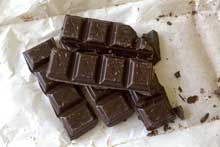This morning I found Prudence dead on the floor of the coop. Yesterday she was a healthy and happy member or the flock. I can’t say for sure what happened, but I’ve got a good guess. Prudence liked to roost on the roof of the nesting boxes. Unlike the metal boxes that you can see in Hencam, the boxes in the new barn are homemade and have a plywood top. The top is sloped, but not so steeply that a hen can’t balance up there. I think last night, she slid off in her sleep, conked her head on the concrete floor, and that was it. Those of you without chickens might be incredulous that a falling chicken wouldn’t wake up and save herself. Those of you with chickens, who have ventured into your coop at night, know how deeply hens sleep. This is why predators can kill off an entire flock in the dark. My husband is going to take the roof off of the nesting boxes. We’ll never again have a nesting box that a hen can precariously perch on.
Prudence is already buried under the new vegetable garden. When you live with chickens in your backyard you know that there will be deaths. Predators and disease take most. If you’re lucky, some will die of old age. Sometimes you don’t know what did your hen in. Whatever the cause, it’s always sad.
It’s a cliche, but life goes on. Two days ago, Alma laid her first egg. It was small and dark brown. Several of the hens have started molting, which means that they will look scraggly for weeks until their new feathers grow in. Marge, who spends most of her days in the bottom nesting box, looks especially messy. Don’t worry about her – she’s fine. Molting hens don’t lay, so egg production is down. However, the girls are earning their keep – we feed them Japanese beetles, which they devour with gusto. Their enthusiasm fuels my 9 year old son, encouraging him to collect the bugs off of my flowers. Next week my new vegetable garden will be ready for planting. I think I’ll grow some kale, just for my good hens.
